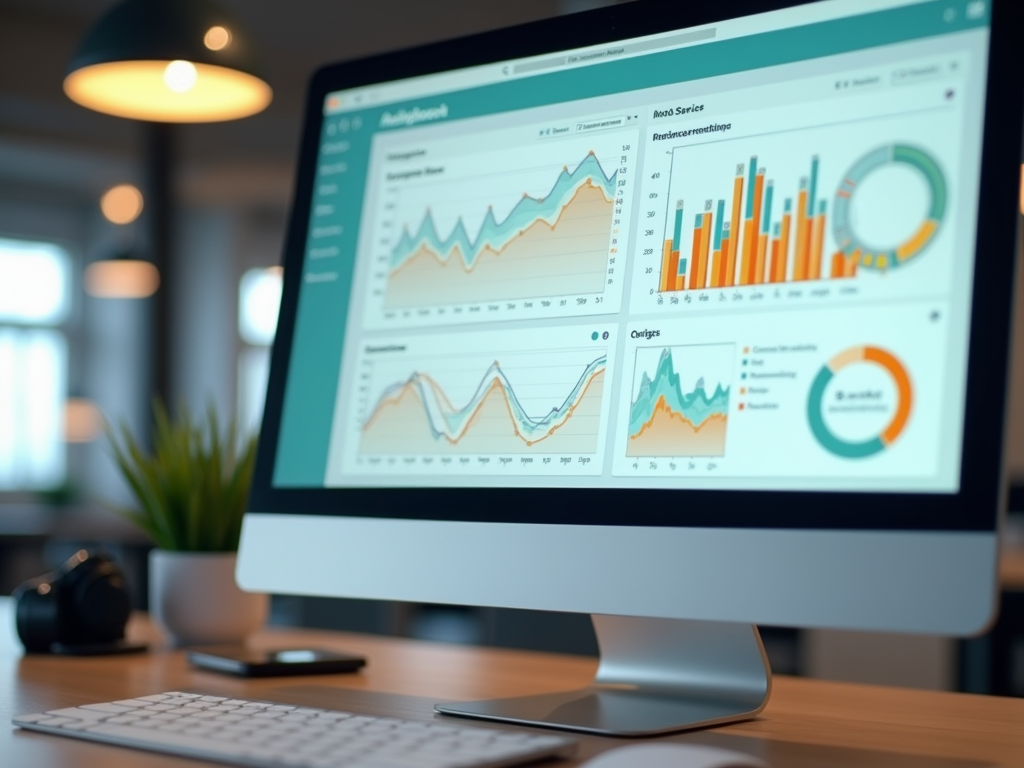
How to Use Analytics to Improve Your Marketing Campaigns
Analytics plays a pivotal role in improving marketing campaigns by providing data-driven insights that help in making informed decisions. By effectively leveraging analytics, marketers can identify trends, understand customer behavior, and optimize campaigns for better performance. This article delves into the various ways analytics can enhance your marketing efforts, transforming raw data into actionable strategies that yield measurable results.
Understanding the Importance of Analytics in Marketing

Analytics offers a comprehensive view of how marketing campaigns perform, enabling businesses to track key performance indicators (KPIs) that are vital for success. The importance of analytics lies not just in gathering data but in interpreting that data to foster growth. Insights garnered from analytics can inform budget allocation, optimize content delivery, and refine targeting strategies. Recognizing customer preferences through analytics enhances personalization efforts, leading to higher engagement rates. Furthermore, continual analysis fosters agility in marketing strategies, allowing businesses to quickly adapt to changing market conditions.
Setting Clear Objectives and KPIs

To effectively utilize analytics, it is essential to set clear objectives and KPIs that align with your overall marketing goals. This process begins by asking yourself what you want to achieve with your marketing campaigns. The following steps can help you in setting these objectives:
- Identify overall marketing goals such as brand awareness, lead generation, or customer retention.
- Pinpoint specific metrics you want to measure, such as click-through rates, conversion rates, or social media engagement.
- Consider creating SMART objectives that are Specific, Measurable, Achievable, Relevant, and Time-bound.
- Communicate these objectives across your team to ensure everyone is aligned.
- Regularly review and adjust these KPIs based on campaign performance and market changes.
By having well-defined objectives and KPIs, marketers can focus their analytics efforts on what truly matters, allowing for targeted analysis that drives improvements.
Employing the right tools is essential to effectively analyze marketing data. Various analytics tools can help you track performance, understand audience behavior, and manage your campaigns efficiently. Some of the most popular analytics tools include:
- Google Analytics: A comprehensive platform that tracks website traffic, conversion rates, and user engagement metrics.
- Social Media Analytics: Platforms such as Facebook Insights and Twitter Analytics provide detailed data on engagement, reach, and audience demographics.
- Email Marketing Analytics: Tools like Mailchimp or HubSpot help you track open rates, click rates, and subscriber engagement metrics.
- SEO Tools: Tools like SEMrush and Moz offer insights into keyword performance, backlinks, and on-page SEO analysis.
- CRM Software: Platforms such as Salesforce provide valuable customer interaction data, allowing for easier segmentation and targeting.
Investing in the right analytics tools will enable marketers to collect meaningful insights, thereby streamlining their campaigns for improved efficiency and effectiveness.
Analyzing and Interpreting Data
Once you have collected enough data, the next crucial step is to analyze and interpret that information. This involves diving deep into the metrics to understand user behavior and campaign performance. Key actions to take during this stage include:
- Identifying trends: Look for patterns over time in customer behavior and conversion rates.
- Segmenting data: Break down your audience based on demographics, interests, and behaviors to tailor your marketing strategies.
- Drawing actionable conclusions: For every insight gained, consider how it can practically impact your marketing strategy.
- Benchmarking: Compare your results against industry standards or past performance to gauge success.
- Testing and iterating: Use A/B testing to evaluate different strategies based on your findings, and continuously refine your approach.
This analytical process will not only highlight what is working well but also identify areas that require improvement and adjustment.
Implementing Changes and Measuring Outcomes
After conducting a thorough analysis, it is essential to implement changes based on the insights gathered. Revamping elements of your marketing campaigns can lead to significant improvements. Remember to monitor the impact of these changes with consistent measurement. Consider the following steps:
- Prioritize changes that will have the greatest impact based on the analysis.
- Document your changes and the rationale behind them for future reference.
- Use analytics tools to track the effects of the changes made.
- Gather feedback from your team and customers on the updated strategies.
- Repeat the analysis and optimization cycle to ensure continuous improvement.
By measuring outcomes and comparing them with previous results, marketers can ensure they are on the right track and adjust accordingly, thus enhancing overall effectiveness.
Conclusion
Utilizing analytics in marketing campaigns is not merely about collecting data but about transforming that data into actionable insights that drive growth. By understanding the importance of analytics, setting clear objectives, employing the right tools, analyzing data rigorously, and implementing strategic changes, marketers can substantially improve their campaigns. Analytics is an ongoing process that enables businesses to remain agile, adapt to market trends, and ultimately achieve better outcomes.
Frequently Asked Questions
1. What are marketing analytics?
Marketing analytics refers to the processes of gathering, analyzing, and interpreting data related to marketing performance. It helps businesses understand customer behavior and optimize marketing strategies.
2. How often should I analyze my marketing data?
You should analyze your marketing data regularly, ideally at the end of each campaign, quarterly, or monthly to gather insights and make necessary adjustments to ongoing strategies.
3. Can I use free tools for marketing analytics?
Yes, there are several free tools like Google Analytics and Facebook Insights that offer valuable data on customer engagement, website traffic, and campaign performance without any cost.
4. How do I interpret the data I collect?
Interpreting data involves identifying trends, segmenting the audience, drawing actionable insights, and comparing those metrics to past performance to gauge effectiveness.
5. Why is it essential to set KPIs for marketing campaigns?
Setting KPIs allows marketers to track specific objectives, measure success accurately, and focus their analytics efforts on key areas that matter for business growth.